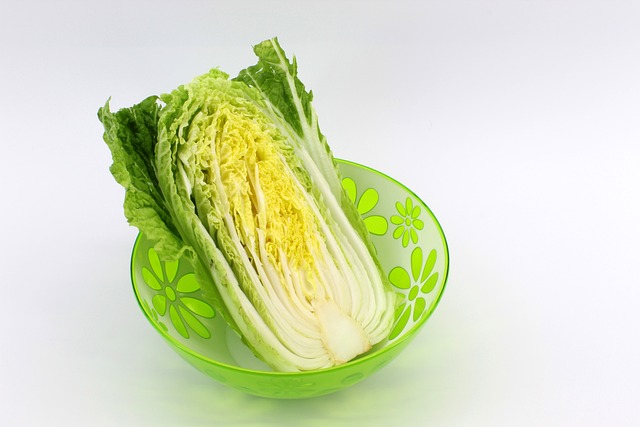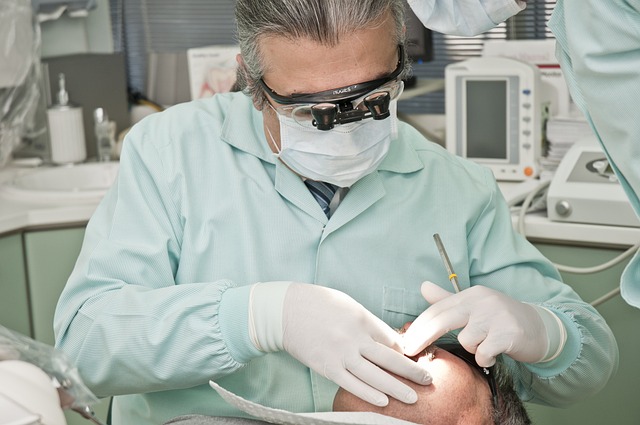Proper Gauze Packing Technique: A Gentle Guide for Tooth Extraction Recovery
Welcome to our article on proper gauze packing technique for tooth extraction recovery! If you’ve recently had a tooth extraction, you’re likely curious about the best way to promote healing and minimize discomfort during this crucial recovery period. One of the key components to a successful recovery is the proper application of gauze, and in this guide, we will walk you through the technique step by step, ensuring a gentle and efficient healing process. Whether you’re a dental professional or a patient interested in learning more, get ready to discover the essential tips and tricks for using gauze effectively to enhance your tooth extraction recovery journey. Together, let’s ensure a smooth road to oral health!
1. Understanding the Importance of Proper Gauze Packing Technique for Tooth Extraction Recovery
Proper gauze packing technique plays a crucial role in the recovery process after a tooth extraction. When done correctly, it helps control bleeding, promotes clot formation, and accelerates healing. Here are some key points to understand about the importance of proper gauze packing technique:
- Minimizes bleeding: Gauze packing exerts gentle pressure on the extraction site, aiding in the formation of a blood clot. This clot prevents excessive bleeding and allows for the initiation of the healing process.
- Promotes a swifter recovery: By following the appropriate gauze packing technique, you can enhance the healing process. This includes changing the gauze regularly to maintain cleanliness and prevent infection, promoting faster recovery time.
- Prevents dry socket: Proper packing technique ensures that the extraction site is adequately protected, reducing the risk of painful complications like dry socket. The gauze acts as a cushion, preventing debris and bacteria from entering the socket, promoting optimal healing conditions.
Remember, if you have any concerns or questions about the gauze packing technique, don’t hesitate to reach out to your dentist or oral surgeon. They are there to guide you through the recovery process and provide personalized advice based on your situation. Taking proper care during this critical phase will help ensure a smooth and successful healing process.

2. Your Road to a Smooth Recovery: Step-by-Step Guide to Proper Gauze Packing Technique
Recovering from certain medical procedures or injuries often involves the use of gauze packing to promote healing. Proper gauze packing technique is crucial for ensuring a comfortable and successful recovery. Follow these step-by-step instructions to ensure you’re using the right technique:
1. Gather your supplies: Before starting, make sure you have all the supplies handy. Gather a sterile gauze, gloves, saline solution, and any prescribed ointments or creams.
2. Prepare the area: Gently clean the wound or affected area with saline solution. Remember to wash your hands thoroughly and put on gloves before touching the wound to maintain hygiene.
3. Cut the gauze: Depending on the size of the wound or area, cut the gauze into an appropriate shape and size. Make sure it is large enough to cover the entire wound, without being too bulky.
4. Apply ointment (if prescribed): If your healthcare provider has recommended using an ointment or cream, apply a thin layer on the wound before packing it with gauze.
5. Pack the wound: Carefully place the gauze into the wound or cavity. Ensure it fits snugly but not too tightly to allow for proper drainage.
6. Secure the gauze: Gently tape or secure the gauze in place using medical tape or dressing. Avoid wrapping it too tight, as it may impede blood circulation.
7. Change regularly: Follow your healthcare provider’s instructions on how often to change the gauze. Usually, gauze packing should be changed at least once or twice a day, depending on the severity of the wound.
By following these step-by-step instructions, you can ensure that you’re using the proper gauze packing technique for a smooth and comfortable recovery. Remember to consult your healthcare provider for specific instructions and seek medical assistance if you encounter any complications.

3. Choosing the Right Gauze and Preparing for a Successful Tooth Extraction Recovery
When it comes to a successful tooth extraction recovery, choosing the right gauze is essential. Here are some tips to help you make the best selection:
- Opt for sterile gauze: Always choose gauze that is individually wrapped and sterile to ensure cleanliness and prevent infection.
- Consider the size: The size of the gauze should be appropriate for the extraction site. While a smaller piece may be sufficient for a simple extraction, larger pieces may be needed for more complex procedures.
- Look for non-stick gauze: Non-stick gauze is gentle on the extraction site, making it easier to remove without causing additional discomfort or damage.
Once you have chosen the right gauze, it is crucial to properly prepare for your tooth extraction recovery. Follow these important steps:
- Stock up on gauze: Make sure you have an adequate supply of gauze on hand before the extraction. This will ensure you are prepared and won’t have to rush to find more during your recovery.
- Protect your extraction site: Place a clean gauze pad over the area immediately after the procedure to control bleeding and promote blood clot formation.
- Change gauze regularly: Replace the gauze pad every 30 minutes or as directed by your dentist. Be gentle when removing the old gauze to avoid disrupting the blood clot.

4. Essential Tips for Applying Gauze Effectively after Tooth Extraction: A Friend to Your Healing Process
After undergoing a tooth extraction procedure, proper care is crucial for a smooth and speedy recovery. One essential step in this process is effectively applying gauze to control bleeding and promote healing. To ensure your healing process goes as smoothly as possible, here are some friendly tips to help you effectively apply gauze:
- Choose the right size: It is important to select the appropriate size of gauze pad for your extraction site. Opt for a pad that is large enough to cover the entire area but not so large that it causes discomfort or impedes your ability to close your mouth.
- Change the gauze regularly: To maintain cleanliness and promote proper healing, change the gauze pad regularly, as directed by your dentist. Usually, the gauze should be replaced every 30 minutes for the first few hours after the extraction.
- Apply gentle pressure: After placing the gauze over the extraction site, remember to apply gentle pressure by biting down lightly. This pressure helps control bleeding by aiding in blood clot formation.
By following these essential tips, you can ensure that the gauze effectively fulfills its role in your healing process. It is important to always consult your dentist for personalized advice based on your specific extraction procedure.

5. The Do’s and Don’ts of Gauze Packing: Enhancing Your Comfort during Tooth Extraction Recovery
The recovery period after tooth extraction can be uncomfortable, but there are certain tips and techniques that can enhance your comfort and promote quicker healing. When it comes to gauze packing, there are some do’s and don’ts that you should keep in mind:
- Do change the gauze regularly: After tooth extraction, it is common to experience bleeding. To control the bleeding, gauze packing is often used. It’s essential to change the gauze every 30 to 45 minutes or as directed by your dentist. This helps maintain cleanliness and prevents infection.
- Don’t bite down on the gauze: While it may be tempting to bite down on the gauze to relieve discomfort, it’s important to avoid doing so. Excessive pressure can dislodge the blood clot that forms in the extraction site, leading to a painful condition called dry socket.
- Do use gauze as a barrier: Placing gauze between your extraction site and your cheek or lips can help prevent accidental biting or irritation. It also helps absorb any excess saliva or blood.
Don’t reuse gauze: While it may seem like a way to save money, reusing gauze can increase the risk of contamination and infection. Always use fresh, sterile gauze for each change.
By following these do’s and don’ts of gauze packing, you can improve your tooth extraction recovery experience. Remember to consult with your dentist for personalized advice and proper instructions tailored to your specific situation.
6. Patience is Key: How Long Should Gauze be Worn after Tooth Extraction?
After undergoing a tooth extraction, it’s important to allow your mouth time to heal properly. One crucial step in the healing process is wearing gauze over the extraction site. Gauze acts as a protective barrier, helping to control bleeding and promote clot formation. But how long should you wear gauze for optimal healing? Let’s find out!
Immediately after extraction: For the first hour after your tooth extraction, you should bite down gently on the gauze pad that has been placed over the extraction site. This helps to apply pressure and promote clot formation. After the first hour, you can remove the initial gauze pad, which may already have become saturated with blood.
- Replace gauze regularly: After removing the initial gauze pad, you should continue replacing it with a fresh one every 30 to 45 minutes for the next 2 to 3 hours. Always ensure the gauze is moistened with saline or water before placing it over the extraction site.
- Reduce frequency: After the first few hours, you can reduce the frequency of gauze pad changes to every 4 to 6 hours or as instructed by your dentist. This allows the extraction site to start scabbing and the healing process to progress.
- Avoid disrupting the blood clot: It’s vital to be gentle and avoid touching the extraction site with your tongue, finger, or any other objects. Disrupting the blood clot can lead to complications like dry socket, delaying the healing process.
By following these guidelines, you’ll be helping your mouth heal after a tooth extraction. Remember, patience is key when it comes to recovery, so be sure to follow your dentist’s specific instructions and give your mouth the time it needs to heal fully!
7. Tips for Painless Gauze Removal after Tooth Extraction: Simplifying Your Recovery Journey
Recovering from a tooth extraction can be uncomfortable, but proper care can make it far less daunting. One important step in the aftercare process is removing the gauze that is placed on the extraction site to control bleeding. Here are some tips to help you painlessly remove gauze after a tooth extraction:
- Moisten the gauze: Before attempting to remove the gauze, try moistening it with sterile saline solution or water. This can help prevent it from sticking to the wound, making removal easier and less painful.
- Gently remove the gauze: Using clean hands or sterile tweezers, gently and slowly pull the gauze out of your mouth. It is essential to avoid any sudden movements that may disturb the extraction site and cause bleeding. Take your time and be patient.
- Take deep breaths: Deep breathing exercises can help you relax before gauze removal. Inhale deeply through your nose, hold your breath for a few seconds, and exhale slowly through your mouth. This can help reduce any anxiety or discomfort you may feel during the process.
Remember, it’s crucial to follow your dentist’s instructions when it comes to gauze removal after a tooth extraction. If you experience severe pain, excessive bleeding, or have any concerns, don’t hesitate to contact your dental professional for further guidance. By following these tips, you’ll simplify your recovery journey and make gauze removal after a tooth extraction a painless and stress-free experience.
+
8. Addressing Common Concerns: Pain, Excessive Bleeding, and Infection Prevention with Gauze Packing
When it comes to gauze packing, some common concerns revolve around pain, excessive bleeding, and infection prevention. Let’s address these issues to alleviate any worries you may have:
Pain: It’s natural to be concerned about experiencing pain with gauze packing. While discomfort is possible, it should not be severe. However, to minimize any discomfort, follow these tips:
- Take over-the-counter pain medication as directed by your healthcare provider.
- Apply a cold pack or ice wrapped in a thin cloth to the area for short periods to numb any pain.
- Ensure that the gauze is properly placed to avoid unnecessary pressure or irritation.
Excessive Bleeding: If you notice excessive bleeding with gauze packing or during its removal, here are a few steps you can take:
- If bleeding persists, apply gentle but firm pressure directly to the area with a clean cloth or gauze.
- Avoid removing the gauze too quickly, as this may lead to increased bleeding. Take your time and proceed cautiously.
- If bleeding continues despite your efforts, contact your healthcare provider for further guidance.
Infection Prevention: Maintaining proper hygiene is vital to prevent infection when using gauze packing. Follow these important steps:
- Clean your hands thoroughly before touching the gauze or the wound.
- Ensure that the gauze used is sterile and free from any visible particles or contaminants.
- Change the gauze regularly as directed by your healthcare provider to prevent bacteria build-up.
- Avoid contact with unclean surfaces and keep the wound area dry and protected.
We hope these tips help address any concerns you may have had regarding pain, excessive bleeding, and infection prevention while using gauze packing. Remember, it’s always best to consult with your healthcare provider for personalized advice specific to your situation. Take care!
9. Alternative Techniques for Gauze Packing: Exploring Options for a Comfortable Tooth Extraction Recovery
Gauze packing is a common technique used after tooth extraction to promote healing and control bleeding. While it plays an essential role in the recovery process, it can sometimes cause discomfort for patients. Luckily, there are alternative techniques available that can provide a more comfortable tooth extraction recovery. In this section, we will explore some of these options:
1. Hemostatic agents:
- Using hemostatic agents can help control bleeding and eliminate the need for gauze packing.
- These agents work by promoting blood clot formation and accelerating the healing process.
- Examples of hemostatic agents include oxidized regenerated cellulose (ORC) and fibrin sealants.
- Consult your dentist to determine if using hemostatic agents is appropriate for your specific case.
2. Dissolvable sutures:
- Sutures, also known as stitches, are commonly used after tooth extraction to close the wound.
- Traditional sutures need to be removed after a certain period, which may cause some discomfort.
- However, using dissolvable sutures eliminates the need for removal as they naturally dissolve over time.
- These sutures are made from materials such as polyglycolic acid or polylactic acid, which are safely absorbed by the body.
By exploring these alternative techniques, you can potentially enhance your tooth extraction recovery experience, making it more comfortable. Remember, it’s always best to consult with your dentist who can guide you in choosing the most suitable option for your specific situation.
10. The Final Stretch: Transitioning from Gauze Packing to a Healthy Healing Process after Tooth Extraction
As you near the end of your tooth extraction recovery journey, it’s important to focus on transitioning from the initial gauze packing stage to a healthy healing process. Following the right steps will ensure a smooth and speedy recovery, allowing you to get back to your normal routine with a rejuvenated smile. Here are a few essential recommendations to aid you during this final stretch:
- Follow your dentist’s instructions: Your dentist will provide you with a customized aftercare plan suited to your specific needs. Make sure to follow their guidelines meticulously to promote optimal healing.
- Continue with at-home care: While gauze packing may no longer be necessary, maintaining a proper oral hygiene routine is crucial. Gently rinse the extraction area with a saltwater solution or an antimicrobial mouthwash, as advised by your dental professional, to keep the area clean and minimize the risk of infection.
- Introduce soft foods and liquids: Gradually reintroduce a soft diet, favoring foods that require minimal chewing. This will help prevent any possible post-extraction discomfort and support healing. Remember to avoid consuming hot foods or drinks that may irritate the extraction site.
- Monitor your progress: Keep an eye on the healing process, observing any potential signs of infection or complications. Contact your dentist immediately if you notice severe pain, excessive bleeding, or any other unusual symptoms.
By implementing these recommendations, you can successfully transition to the final stage of recovery after tooth extraction. Remember, every person’s healing process may vary, so consult with your dentist for personalized advice and reassurance. Take care of yourself and embrace the exciting prospect of a healthy, fully healed smile!
Frequently Asked Questions
Q: What is gauze packing and why is it used after tooth extraction?
A: After a tooth extraction, gauze packing is placed over the extraction site to promote proper healing, control bleeding, and protect the area from potential infection.
Q: How does gauze packing help in the recovery process?
A: Gauze packing aids in the recovery process by applying gentle pressure to the extraction site, helping blood clot formation, and minimizing bleeding while providing a protective layer that prevents debris and bacteria from entering the open wound.
Q: How soon after the tooth extraction should gauze packing be applied?
A: Gauze packing should be applied immediately after the tooth extraction. The dentist or oral surgeon will provide you with the necessary gauze and demonstrate the proper technique.
Q: How long should the gauze packing be left in place?
A: Typically, gauze packing should be left in place for about 30 minutes to 1 hour after the tooth extraction. However, it’s essential to follow the dentist’s instructions as they may vary depending on the complexity of the extraction.
Q: Is it necessary to change the gauze packing regularly?
A: Yes, it is important to change the gauze packing regularly. After the initial 30 minutes to 1 hour, remove the used gauze carefully and replace it with new sterile gauze as instructed by the dental professional.
Q: How many times should the gauze packing be changed per day?
A: The frequency of changing gauze packing may vary depending on the level of bleeding. Generally, it is recommended to change the gauze packing every 3 to 4 hours on the day of the extraction. However, if the bleeding has significantly reduced, it may be necessary to change it less frequently or as instructed by your dentist.
Q: What is the proper technique for placing the gauze packing?
A: To properly place the gauze packing, gently roll or fold the gauze into a compact, thick pad. Then, place the folded gauze directly over the extraction site and bite down firmly but gently to create pressure. Make sure the gauze covers the entire extraction site, but be careful not to bite too hard to avoid discomfort or dislodging the blood clot.
Q: Can gauze packing cause pain or discomfort?
A: While some mild discomfort may be experienced initially due to the pressure on the extraction site, gauze packing should not cause severe pain. If you are experiencing significant pain or discomfort, it is crucial to contact your dentist for further guidance.
Q: Are there any potential complications associated with improper gauze packing?
A: Improper gauze packing, such as failing to replace it regularly or placing it incorrectly, may lead to an increased risk of bleeding, delayed healing, or infection. Therefore, it is essential to follow the dentist’s instructions precisely to ensure proper gauze packing technique.
Q: When should I seek professional help regarding gauze packing?
A: If bleeding persists or becomes excessive, or if you notice any signs of infection such as severe pain, swelling, or a fever, it is important to contact your dentist immediately for professional assistance and guidance.
Conclusion
In conclusion, mastering the art of proper gauze packing technique is the key to a smoother and more comfortable tooth extraction recovery. By following our gentle guide, you can minimize discomfort, reduce bleeding, and promote faster healing. Remember, the right type of gauze, correct placement, and gentle pressure are the pillars of a successful packing technique.
Equipping yourself with the knowledge of how to handle gauze and understanding its purpose will help you navigate the post-extraction journey with confidence. Don’t shy away from asking your dentist or oral surgeon any questions you may have, as their guidance is invaluable in ensuring your optimal recovery.
Remember that everyone’s healing process is unique, and you may encounter minor setbacks along the way. However, with proper gauze packing technique and enough rest, you’ll be well on your way to a swift recovery and a healthy, pain-free smile.
We hope this article has shed light on the importance of mastering proper gauze packing technique. Our aim is to empower you with the necessary knowledge to navigate tooth extraction recovery smoothly and gently. Your oral health is a priority, and by following these guidelines, you can ensure that you’re giving yourself the best chance at a successful recovery.
As always, be gentle with yourself and your healing process. Take the time you need to rest and recover fully. Soon enough, you’ll be back to your normal routine, flashing that gorgeous smile with a newfound appreciation for proper gauze packing technique and all its benefits. Cheers to your oral health and a speedy recovery!






